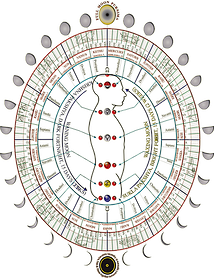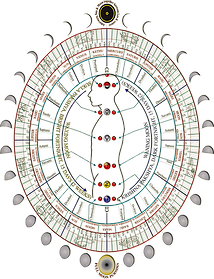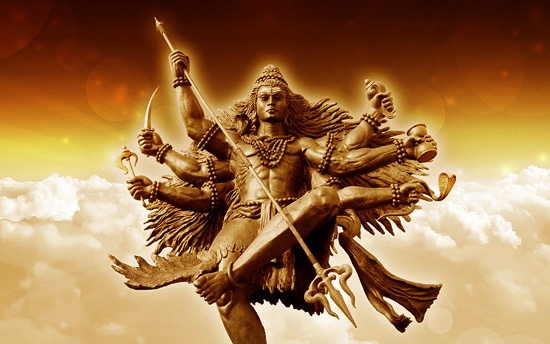

|
|
|||
|
|
|||
|
|
|||
|
|

|
|
||
|
|
||
|
|
||
|
|



|
|
|||
|
|
|||
|
|
|||
|
|

|
|
||
|
|
||
|
|
||
|
|


The word Shiva comprises of three syllables: sa, i and va, where sa is the Soul, i-power (energy, Shakti), va (vasati)-sitting/residing. Separating these three syllables they lose their meaning and value. Without i-kara, Shiva becomes Shava, whose meaning is “dead body”. When i-kara is added, Shakti is added to Shava , forming Shiva. The life is brought into the dead body. I-kara is life and life is you. Life is God, omnipresent, omnipotent and all-pervading.
Ratri means the night. One should know that day is illusion, night is the reality. Existence of day came much after the existence of night. As the life in the ocean came much after the water itself. The night has always existed. It is eternal. The day has manifested in the womb of night and born much after. Therefore, in many scriptures, referring to the beginning of the time, day was not mentioned, as it did not exist. They say ratri –always night, with the meaning that day was included into the term. If the word “son” is uttered, mother is not necessarily included, though the mother exists. But if one says “mother”, son is definitely included; the presence/existence of the son being always in the heart of the mother, while most of the time mother is not in the heart of the son. That is the difference. It is therefore essential to bring mother and son together.
Another name for Shivaratri is Jiagara Amavasya (Jiagrata in Sanskrit), which means to be always awake, conscious, with awareness, never sleeping. Generally, people have the idea that sleeping means to snore. There are many, thousands of ways of sleeping, but the awaken state is just one. One can sleep, while looking awake, having all kinds of day dreams, thoughts, imagination, anger, ego. There are twenty-five types of basic characters and they are all called states of sleep. Thus, the foundation of the awakening is the removal of these characters.
Mahashivaratri is an Indian traditional festival and the wrong concept of it is very deeply rooted in the mind of all Hindus. In the night with no moon (Amavasya), one has to pass the whole time without sleeping and there are many ways and methods how to succeed in doing so. One of the most common method to remain awake the whole night of Shivaratri is to burn an oil lamp at the Shiva’s temple and to sit in front of it, focusing on the light (jyoti) without being distracted by anything (without looking anywhere else), sitting calmly and be still. In other cases people are holding the lamp (candle) with both hands during the whole night and in some others they even put the candle on the top of their head and sit still until the night is over. Then they can leave the temple but they are not supposed to sleep the day either. In many of the cases, people neither eat nor drink and some of them do not even swallow their saliva until the next evening. The right time to end the worship of Shiva is the next evening, when Venus (the brightest planet/star) can be seen in the sky. In the day of Amavasya (no moon day), as Sun and Moon remain together; one can see Venus as the first star shining brightly at the time of sunset, just before the falling of the darkness. Only after seeing Venus, people can go for food and rest. Then they can break their vow of austerity (sankalpa).
I do not intend to say anything against this Hindu tradition. As everything exists in this universe, where every word, either good or bad exists with a purpose, this kind of austerity has to have an effect too. As an example, if one takes such a vow, imploring Shiva to fulfill a desire, and completing the tapas (austerity) with a pure heart, there are many chances that Lord Shiva (God) will fulfill one’s wish sooner or later. I have no objection and I see no contradiction here but it is the birth right of every human being to know the truth, the reality.
What is the real meaning of Shivaratri? To bring i-kara (the breath of life) into the dead body (shava) with every breath that we take, one after another, with full awareness (consciously), doing this continually, (without any interruption).
It is said in Yoga Sutra of Patanjala that Tatra pratyayaiekatanata dhyanam. The message of this sloka is that one has to breathe, one breath after another, now and here, in this body temple. The breath has to be raised up from Muladhara chakra (in the coccyx) up to Sahasrara chakra (in the fontanel). Therefore, Mahashivaratri usually takes place in the month of February, called also the Kumbha masa, which is the month of Aquarius. The sign of Aquarius is in the beginning of Uttarayana, Muladhara chakra, on the back side of the spine. In the day of Shivaratri, at the temple, the priest uses to burn fourteen oil lamps, Shivaratri being also called Chaturdasi, whose meaning is the end of 14th day of the month of Aquarius, at the conjunction of Sun and Moon. In reality, all these actions are taking place only in the human body’s temple. We have fourteen lights (seven chakras-two times) starting from Sahasrara (Fontanel) down to Muladhara (coccyx) in Dakshinayana (seven) and lifting Sun and Moon together from Muladhara up to Sahasrara (seven). This is possible only by sacrificing the life, the breath. It means that in every breath one has to lift the Sun and Moon, breath and life together (breath is Sun, life is Moon). When breath is lifted up to Sahasrara through the proper meditation (Kriya) the mahadeepa of Mahashivaratri is also lifted up. Why mahadeepa? Because all fourteen lights, (seven descending in Dakshinayana and seven ascending in Uttarayana) join together into one; a light that is fourteen times brighter, becoming maha- the great. Immediately after the conjunction of both Soon and Moon at 0 degrees in Aquarius, the ratri (Amavasya) takes place. When a yogi meditates with full awareness (consciously-Jagara) and without any interruption, lifting up the lights of all chakras, the mahadeepa lifts up to the top of the body temple. This is what in the past Hindus used to do. At some point in time things changed and external rituals replaced the internal spiritual practice, which are now held by Hindu priests in stone temples instead of the real temple, which is the spine of the human being. The real tradition was lost. Here we have no objection as long as both the external ritual and the internal worship exist together. It is possible to neglect the external ritual and maintain only the internal worship but definitely not the other way around; otherwise it would invariably turn into fanaticism. Here it should not be out of context to mention that when we are talking about the breath, life, body temple, inner light, we are not talking about a single collective such as the Hindus, but the whole of mankind.
Nowadays, in this globalized computerized communicative age, all these spiritual festivals become well-known to everyone in the world (mankind) and therefore, not only on Shivaratri but on many other occasions of Hindu worship, such as no moon day, full moon day, ekadashi, dwadashi. People from many different backgrounds and religions are coming with faith and joining all these festivals because they are trying to find out the foundation of the religion of Life. Eventually they find out that there is no existence of any –ism, the only dharma being the breath of life and consciousness. Unfortunately, most Hindus hold simply to external rituals and they have forgotten the essence of the tradition. Absence of breath is death, presence of breath is life. Life is truth. Satyam Shivam Sundaram.
Pranam and blessings
On the occasion of Mahashivaratri,
Baba